Nestled in the hills of Basilicata, in Southern Italy, lies the ancient city of Matera—a city famed for its Sassi cave dwellings, its mesmerising golden landscapes and for the culinary aficionados – Pane di Matera. Pane di Matera is not only a delicious bread, with a thick, chewy crust and aromatic, honeycomb-like crumb, it is also a bread which has endured centuries of change and hardship and carries with it the essence of Materan culture and the taste of tradition itself. Revered across Italy, Pane di Matera has gained recognition worldwide.
History of Pane di Matera
To understand the significance of Pane di Matera, one must delve into the very soul of Matera itself. The city is among the oldest continuously inhabited settlements in the world, with human presence dating back more than 9,000 years. Throughout its long and sometimes tumultuous history, Matera has seen waves of different peoples—Greeks, Romans, Lombards, Byzantines—all of whom have left a trace on local customs, including the art of breadmaking.
Bread in Matera is not merely nourishment, but a cultural artifact. It is said that in ancient times, the bread was so central to family life that each household marked its dough with a special stamp, often bearing the family’s initials or a unique symbol, before sending it to the communal ovens. For generations, baking was a collective ritual—women would knead and shape the dough at home, then carry their loaves to the town’s wood-fired ovens, where the bakers would manage the fire and the baking, returning the finished loaves to their rightful owners.
Matera’s bread is distinct not only because of these traditions but also thanks to the region’s unique wheat varieties. The local durum wheat, grown on the high, windswept plateaus of the Murgia, gives the bread its characteristic flavour, colour, and texture. The crumb is pale yellow, flecked with bits of bran, and the crust is thick and aromatic, able to preserve the bread for up to a week—a boon in times when food preservation was essential.
The bread’s shape is also distinctive: Pane di Matera is most commonly formed in large, cresting loaves, reminiscent of a mountain range or, as some say, the iconic Sassi cliffs. This shape is not mere artistry; it helps to distribute the heat evenly during baking, ensuring a perfect crumb and crust.
During the 20th century, especially after World War II, the bread of Matera faced the threat of extinction, as industrial baking processes and standardized flours became dominant. However, in recent decades, local bakers and community leaders have revived the traditions, earning Pane di Matera the coveted Protected Geographical Indication (PGI) status in 2008. Today, it stands as a monument to slow food, local identity, and the enduring connection between land and table.

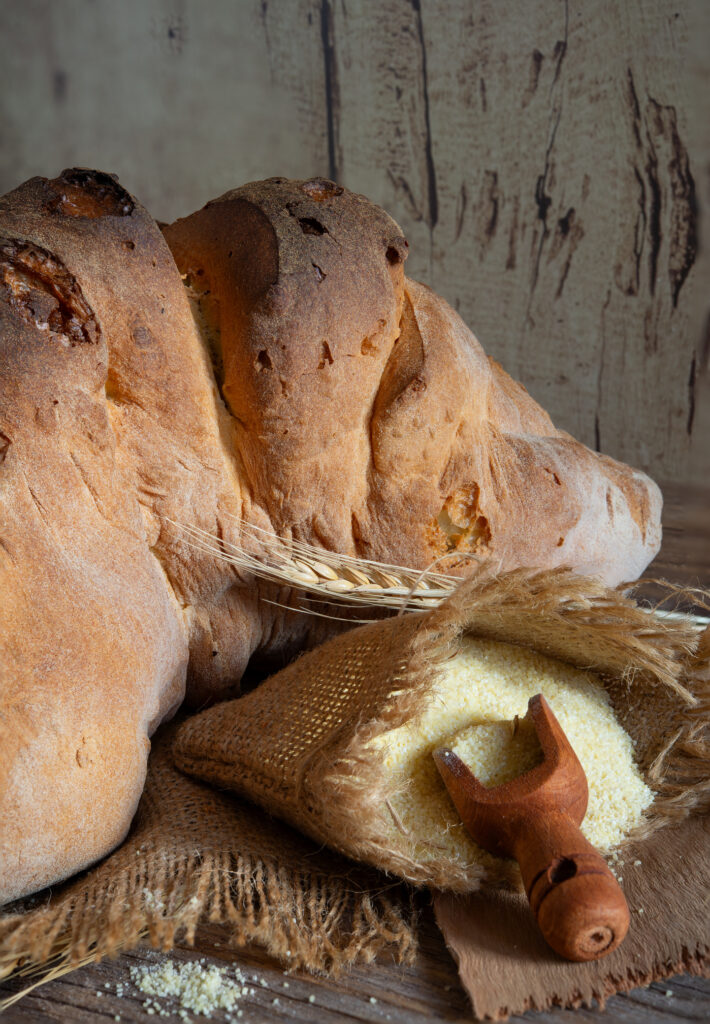
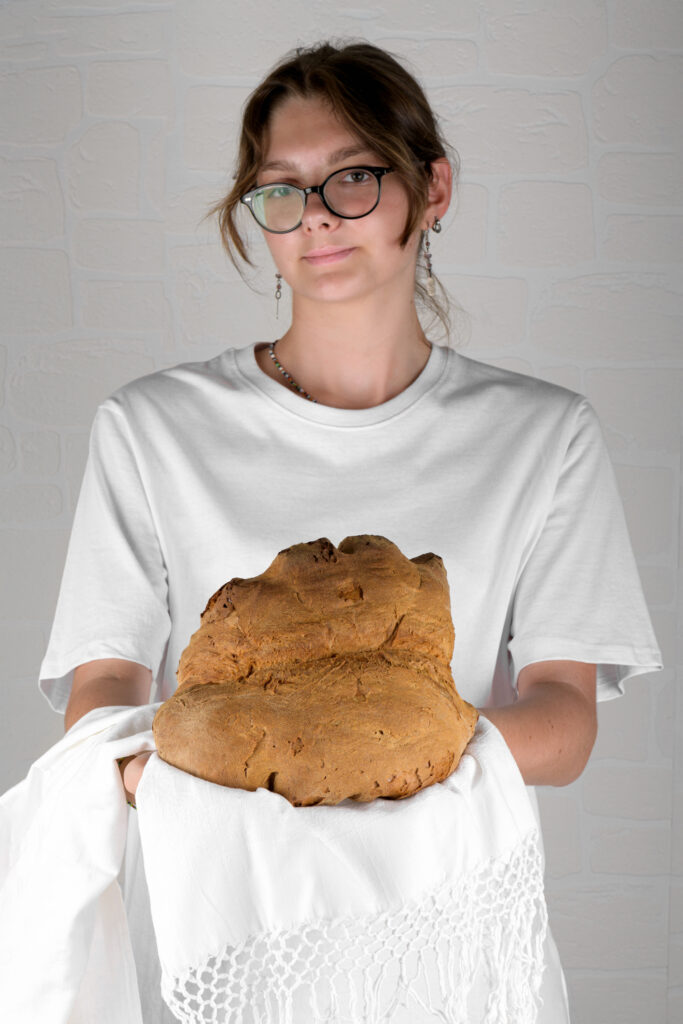
Recipe: How to Make Pane di Matera at Home
Recreating Pane di Matera in your own kitchen is a rewarding endeavor, even if you cannot use the exact wheat of the Materan hills or the communal ovens of the old quarters. What matters most is the attention to detail, patience, and respect for the process. Below is a traditional-style recipe adapted for the modern home baker.
Ingredients
- 1 kg (about 8 cups) of high-quality durum wheat semolina flour (preferably stone-ground, or a high-protein bread flour if semolina is unavailable)
- 800 ml (about 3 1/4 cups) of lukewarm water
- 20 g (about 1 tablespoon) of sea salt
- 200 g (about 1 cup) of active sourdough starter (lievito madre), or 7 g (about 2 teaspoons) of active dry yeast if unavailable
Method
Prepare the Starter (if using sourdough):
If you have a mature sourdough starter, feed it about 8 hours before you plan to bake, ensuring it is bubbly and active.
Mixing the Dough:
In a large bowl, dissolve the sourdough starter (or yeast) in the lukewarm water. Gradually add the flour, mixing by hand or with a wooden spoon. When the dough comes together, add the salt and continue kneading until you have a smooth, elastic dough—about 10-15 minutes by hand.
First Rise (Bulk Fermentation):
Cover the bowl with a damp cloth and let the dough rise in a warm place for 3–4 hours (or until doubled in size if using yeast; with sourdough, it may take up to 6 hours, depending on conditions).
Shaping:
Turn the risen dough out onto a lightly floured surface. Gently shape the dough into a large, rustic loaf—traditionally, this is a crescent or “mountain” shape, but a round or oblong loaf works as well. Try not to knock too much air out of the dough.
Second Rise:
Place the shaped loaf on parchment paper or a floured baking peel. Cover and let rise for another 1–2 hours, until noticeably puffy.
Scoring:
Right before baking, use a sharp knife or bread lame to slash the top of the loaf in a decorative pattern. This allows the bread to expand in the oven and develop its signature crust.
Baking:
Preheat your oven to its highest setting (usually about 250°C/480°F) with a baking stone or heavy baking tray inside. Place a pan of water on the bottom rack to create steam. Slide the loaf onto the hot stone/tray, mist the oven with water, and immediately lower the temperature to 220°C/430°F. Bake for 45–55 minutes, or until the loaf is deep golden brown and sounds hollow when tapped.
Cooling:
Let the bread cool completely on a rack before slicing. The aroma that fills your home will be irresistible!
The Enduring Legacy of Matera Bread
Pane di Matera is a food that tells a story—of the land, the people, and the unbroken line of hands that have shaped it over the centuries. Whether you bake Pane di Matera in your own oven or taste it fresh in a bakery in the ancient city, you are partaking in a ritual as old as civilisation itself—sharing in the warmth and sustenance of the earth, transformed by skill and time into something transcendent.
Matera itself is a must see destination. It offers a mesmerizing journey through history and culture. Recognised as a UNESCO World Heritage Site, the city enchants visitors with winding stone lanes, rock-carved churches, and panoramic views over dramatic ravines. Matera’s culinary traditions, provide a delicious taste of local heritage. Whether you’re exploring centuries-old cave homes or enjoying artisanal bread in a bustling piazza, Matera promises an unforgettable blend of authenticity, warmth, and breathtaking beauty.
Experience the Magic of Matera with Vita Italian Tours
Visit Matera with us at Vita Italian Tours on our exclusive small group tour – Pearls of Puglia & Matera . The tour highlights Italy’s rich cultural and culinary heritage visiting the southern region of Puglia & Matera. The journey through these regions will focus on visiting unique medieval villages and castles and experiencing specialty regional cuisine with local wines.
Book a 2026 small group journey before 30 NOV 2025 and receive a $200 discount per person*
*Discount only applies to tours booked directly with Vita Italian Tours
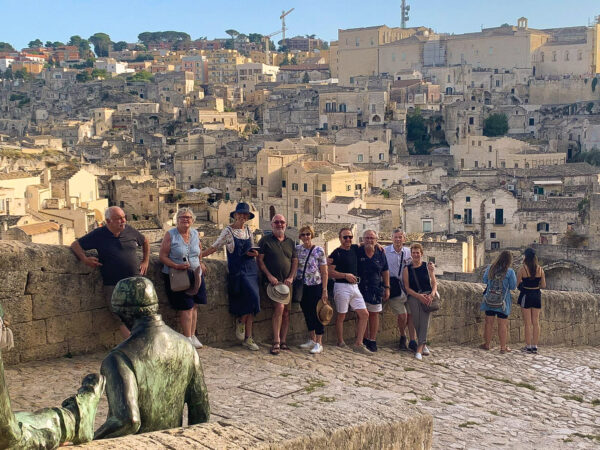
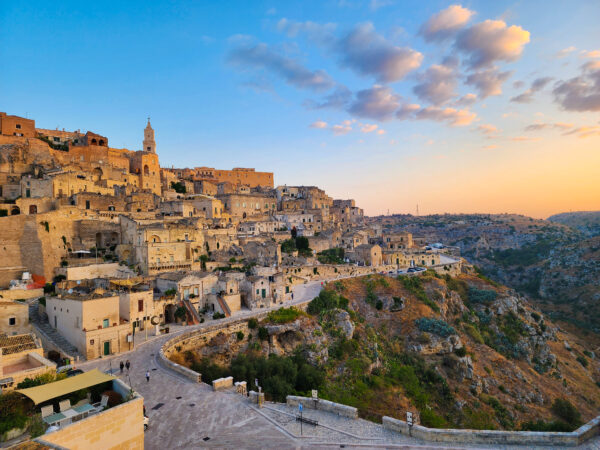
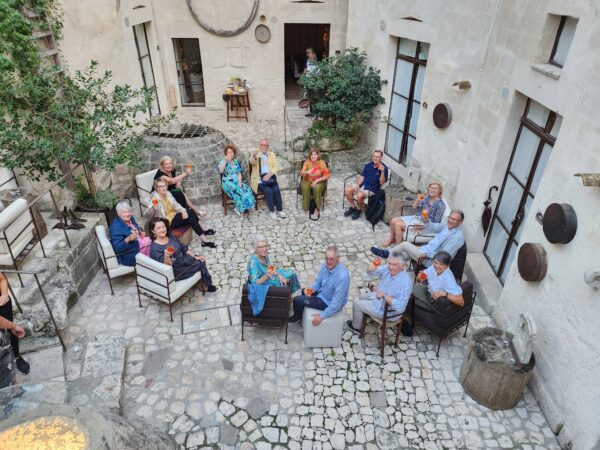
“What an experience – enlightening, enchanting & amazing” – L Deans (NSW)
If independent travel is more your style, allow Vita Italian Tours with our decades of experience living, studying and touring in Italy to plan a tailor-made self-drive or chauffeur driven private itinerary/tour for you to Matera, Italy and its surrounds.
Contact us and start planning your adventure today.

